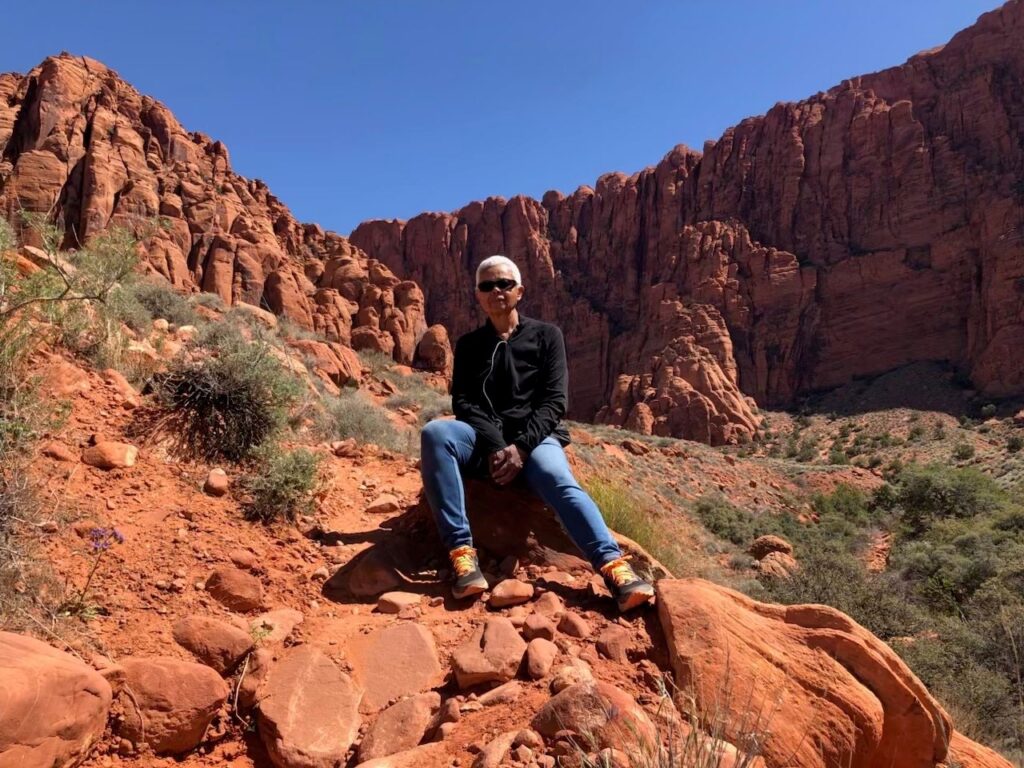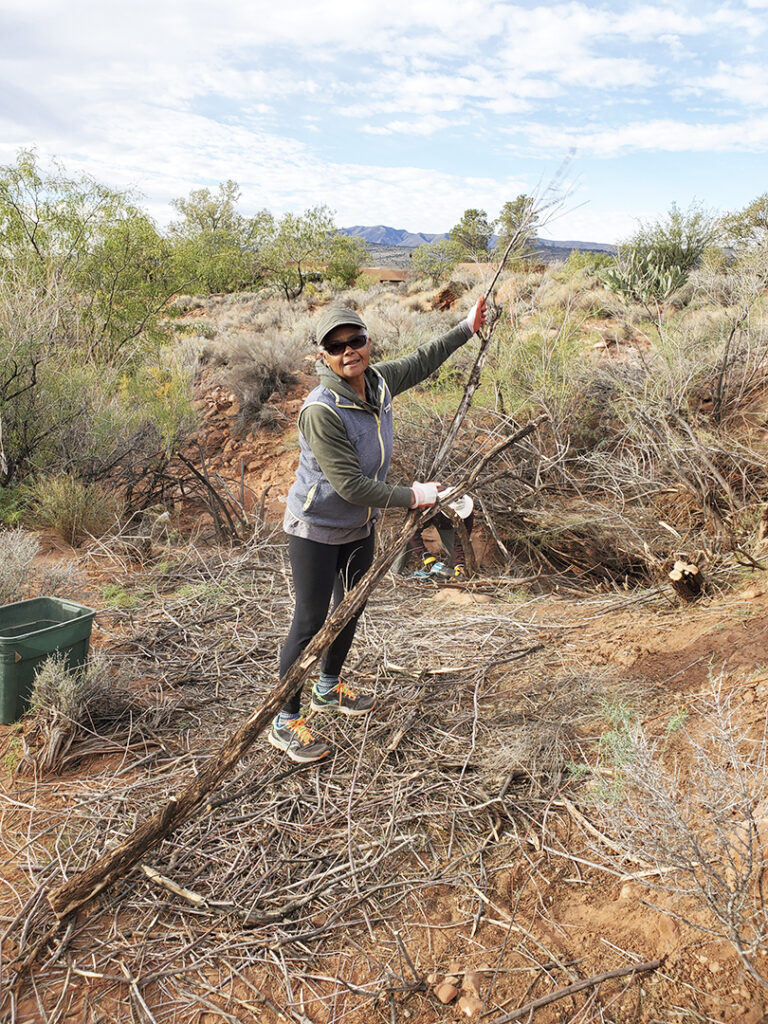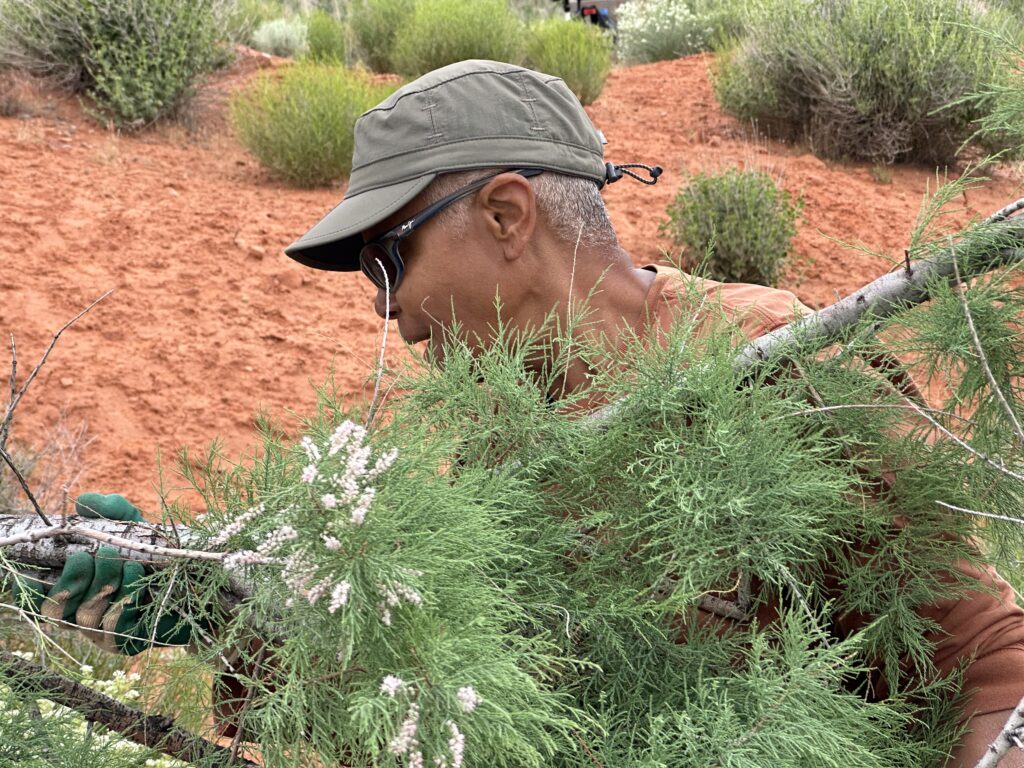
Volunteering to Preserve the Beauty of Ivins
Like many, Carole Richard and her husband Steven like to hike and backpack. While checking out some western towns as possible retirement sites, they accidentally discovered Ivins. “Next thing I know, we are making an offer on a house,” she says. That offer was only the first in a series of discoveries that led Carole to join in the work of the Desert Preservation Initiative.
Born in Haiti, Carole lived in states all across the U.S. but grew up in New York and considers herself a New Yorker “by attitude.” Following her career in the early dot-com world and later in finance, Carole and Steven, who also worked in the dot-com industry but retired from the Federal Reserve Bank as a product manager, ultimately moved to the Ivins community of Kayenta because it “offered all the things we planned to do in retirement and all within easy access to hiking, camping and backpacking.” Her interest in hiking led Carole to her current volunteer work with DPI.
On a nature walk led by Chuck Warren, now DPI president, Carole responded to Chuck’s request for help building and maintaining Kayenta trails. Eventually, “tamarisk derangement syndrome” took over she says, tongue in cheek, and DPI was created. While she was once amazed by a super bloom of tamarisk trees on a camping trip in Borrego Springs, Carole soon found out that the temporary beauty of tamarisk is “only skin deep.” Working with DPI to remove tamarisk “we discover native plants that were struggling to survive and now they will have a chance to thrive. We are making a difference; it matters to the desert what we do in removing invasive plants.”
Carole has since upped her commitment to tamarisk removal by joining the DPI board of directors. She is delighted to find a way to give back while in retirement and enjoys the physical effort required along with the sense of accomplishment. “We have opened up vistas for homeowners and hikers alike,” she says. “It is also very therapeutic and helps reduce aggression by ripping out invasive plants from the ground.”
Looking to the work ahead, “we need more homeowners to allow us to remove their tamarisk and cash donations to continue the work effort of our volunteers,” she adds. “It’s important that we continue toward our primary goal, to preserve the desert for native species which tamarisk is choking out.”

